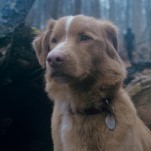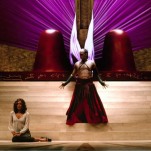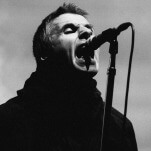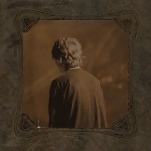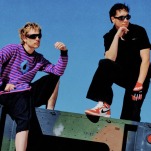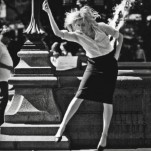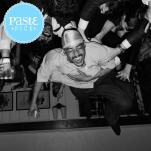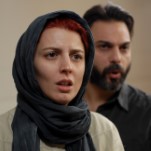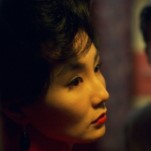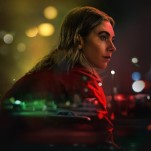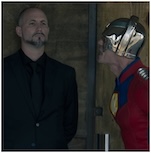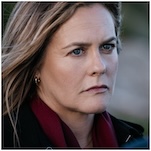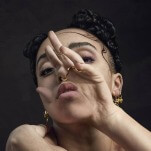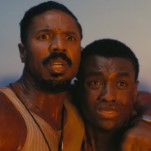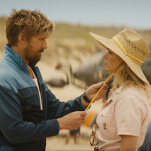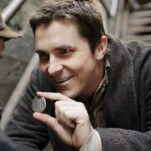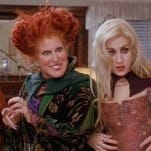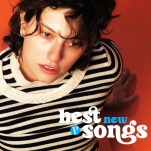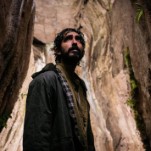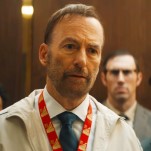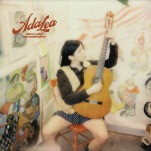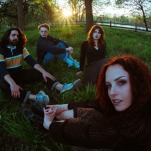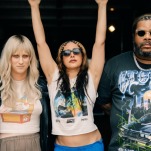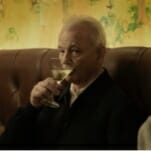Nick Rhodes and Wendy Bevan Look Upward and Inward on Astronomia
Photo by Radka Leitmeritz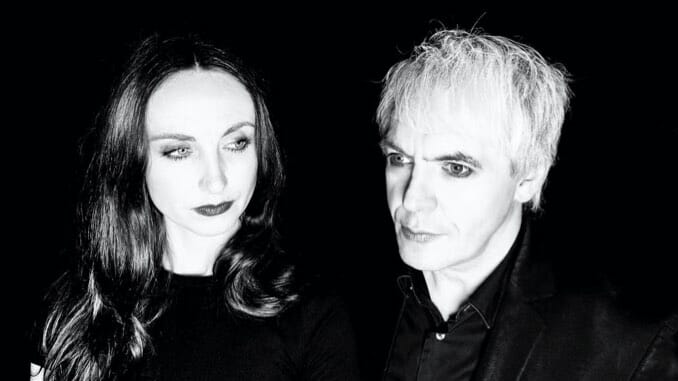
Throughout four decades with his New Romantic-era-spawned supergroup Duran Duran, keyboardist Nick Rhodes has busied himself with many diversions, like photography, a trailblazing skincare company called GENEU, and various short-lived splinter groups like Arcadia, The Devils and TV Mania. So he wasn’t intending to form another side project during his pandemic downtime, he swears. Astronomia, his Dead Can Dance-classy new duo with British-born, Los Angeles-rooted singer/auteur Wendy Bevan, was a happy accident, a serendipitous surprise that, over the past year, has amassed 52 atmospheric tracks, which are being released seasonally, in four separate discs, starting with this spring’s Astronomia: The Fall of Saturn and continuing into the brand-new Astronomia II: The Rise of Lyra; two more volumes are set for fall and winter releases.
“I think the thing was, we didn’t really know what we were making when we started,” Rhodes elaborated in a recent phone call from his native London, with Bevan on the line, as well. “It was tabula rasa, just nothing whatsoever—just a blank canvas, like ‘What do we do? Let’s just start making a noise.’ So Wendy would make a fabulous noise with her violins and vocals and layers and effects and then send it to me, and I would listen to it and just add layers of analog synths, percussion and sound effects. Or I would come up with a little structure and some sounds and send it to Wendy, and then she’d send it back with these beautiful, ethereal atmospheres swooping over it. And we suddenly realized, about five or six tracks in, that we had created our own unique sound.”
Given Rhodes’ deep affection for analog keyboards (his inventive work with early models like the Jupiter 8 just earned him a Lifetime Achievement Award from Roland), Lyra texturally feels like a more restrained Enya fronting a Sorcerer-era Tangerine Dream, with evocative titles summoned from Greek mythology: “Vega,” “Apollo’s Gift,” “The Charm of Orpheus,” and an appropriately ominous “Eurydice and the Underworld.” And while he’s already returned to punching the Duran Duran clock (a funky single, “Invisible,” is already paving the way for a forthcoming Future Past album, with a cutting-edge video created solely by an artificial intelligence named Huxley), Rhodes will be collaborating with Bevan for some time to come, even after touring demands toss him back onto the stadium circuit again. The duo had much to say about Astronomia in the meantime …
Paste: Oddly enough, I was just speaking to MNDR, or Amanda, and she was still amazed that she got to sit in on keyboards for you on a recent Duran Duran tour. Small world, right?
Nick Rhodes: Yeah! I had to leave the Paper Gods tour for a few weeks to deal with some things in the U.K., and I didn’t want to stop the tour, so Amanda stepped in, and did a very good job, too. So now I know—I’ve got a stunt double for sure. And we met through Mark Ronson—we met when we were working with Mark, and she was on Mark’s tour, and she was on Mark’s solo album. And of course, she’s an analog synth geek just like me. So the two of us got on very well, and Simon and I guested on a couple of Mark’s solo shows that Amanda was playing on, and we got to know each other. But it came to mind, because we needed to find somebody quite quickly. And I thought, “Well, she’d be great, if she’s up for it!” And I think she had a nice time, so that’s good.
Paste: And who introduced you to Wendy?
Rhodes: We were introduced by a mutual friend here in London, who actually had said to me, “I think you should meet, because you’re going to like Wendy. You two have lots in common, and maybe you can work together on something, because she wants to do a new solo album.” And so we did meet, and we got along very, very well, and we did have a lot of things in common outside of music, like photography, particularly, and art, theatre and cinema. And so we got chatting, and said, “Well, let’s do a day in the studio.” And it was for Wendy’s solo album, which is regular songs, and she’s singing throughout. So we worked on that, on and off, for over a year, and just about last January, February, we were completing it in the studio, and suddenly the world changed. And so we said, “Well, perhaps we’d better not put the album out yet.” Because Wendy wanted to support it with promotion and obviously some live shows, and it just didn’t make sense. So we ended up separating—Wendy went back to Los Angeles, where she was living at the time, and I stayed in London, and we were able to continue working remotely, sending files backwards and forwards to each other, which is what became the Astronomia project. So we missed Wendy’s release date, that’s for sure.
Wendy Bevan: But we’ve created four other albums since, so things didn’t turn out so bad.
Paste: Wendy, it seems like anything goes with you artistically. Your last U.K. exhibit, Slow Light, was photographic prints, projections, plus a music installation with violin sounds. Plus you have a certain Gothic sensibility.
Bevan: Yeah, and I think Nick and I particularly get along because of that. But Slow Light was an audio/visual thing, and basically a self-portrait exhibition that I put together, so all the images were self-portraits. But they were very multiple-exposure, so you couldn’t tell that they were self-portraits. So I had two sides to the exhibition, one was that there were several images printed on gauze, like a silk organza gauze that was very, very thin, and then there were about 12 of those blown up to two meters by two meters, and hung, suspended in a row. So it sort of looked like a big light prism when you stood in front of it. And then in another room, I had this sort of a blacked-out box, where I then projected all the same images onto actually what was a parachute, but knitted in a way that it looked like this completely suspended, unknown shape in the room that was lifted up and down with a wind machine. And then the music was playing to it, so it was an experiential piece. And I wrote an album for that, which I think was really one of the starting points of me composing a lot of this music. And it was definitely something I dipped into for inspiration at the beginning of writing Astronomia.
Paste: Where did that interest in studying your own reflection come from? Was it a Cindy Sherman kind of thing?
-

-

-

-

-

-

-

-

-

-

-

-

-

-

-

-

-

-

-

-

-

-

-

-

-

-

-

-

-

-

-

-

-

-

-

-

-

-

-

-


